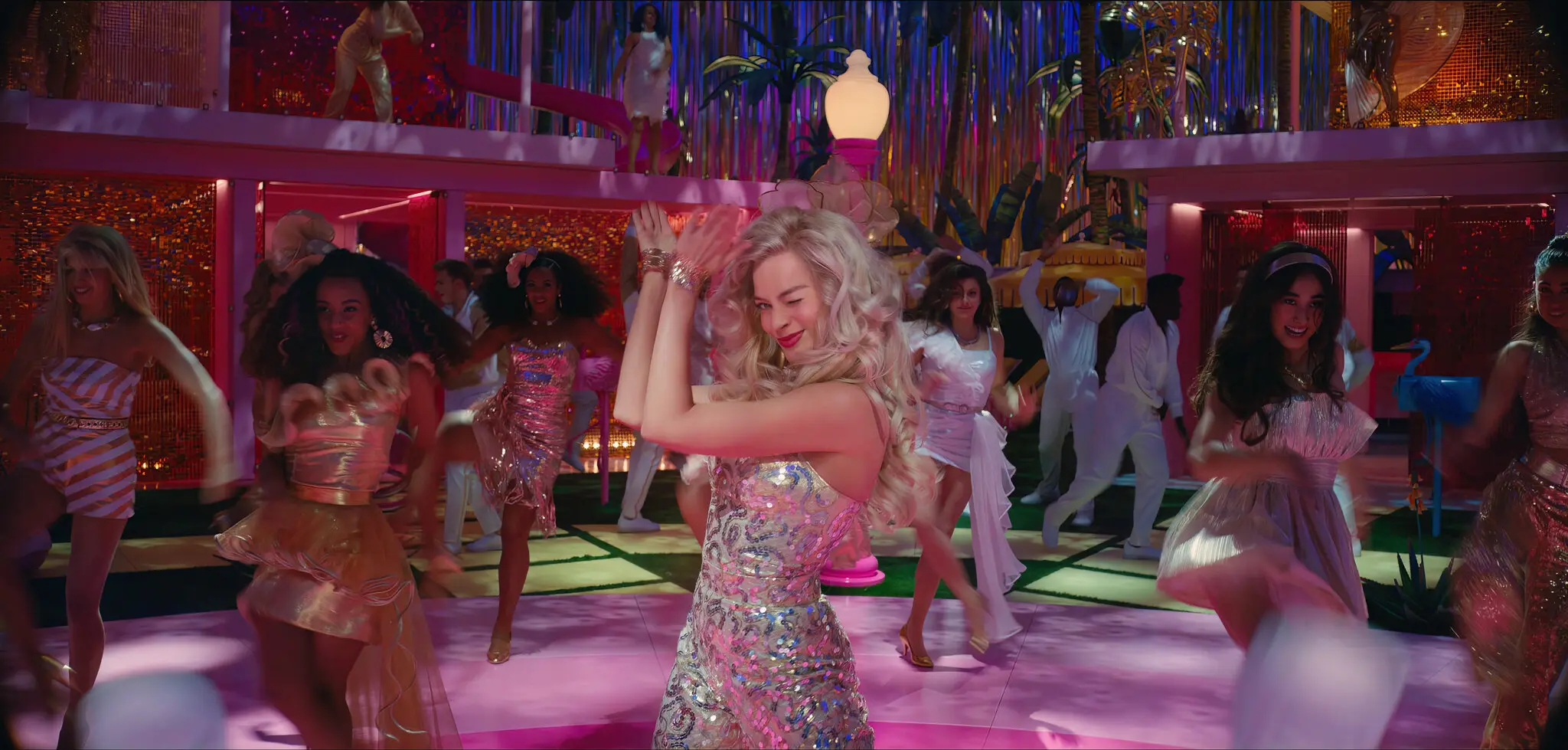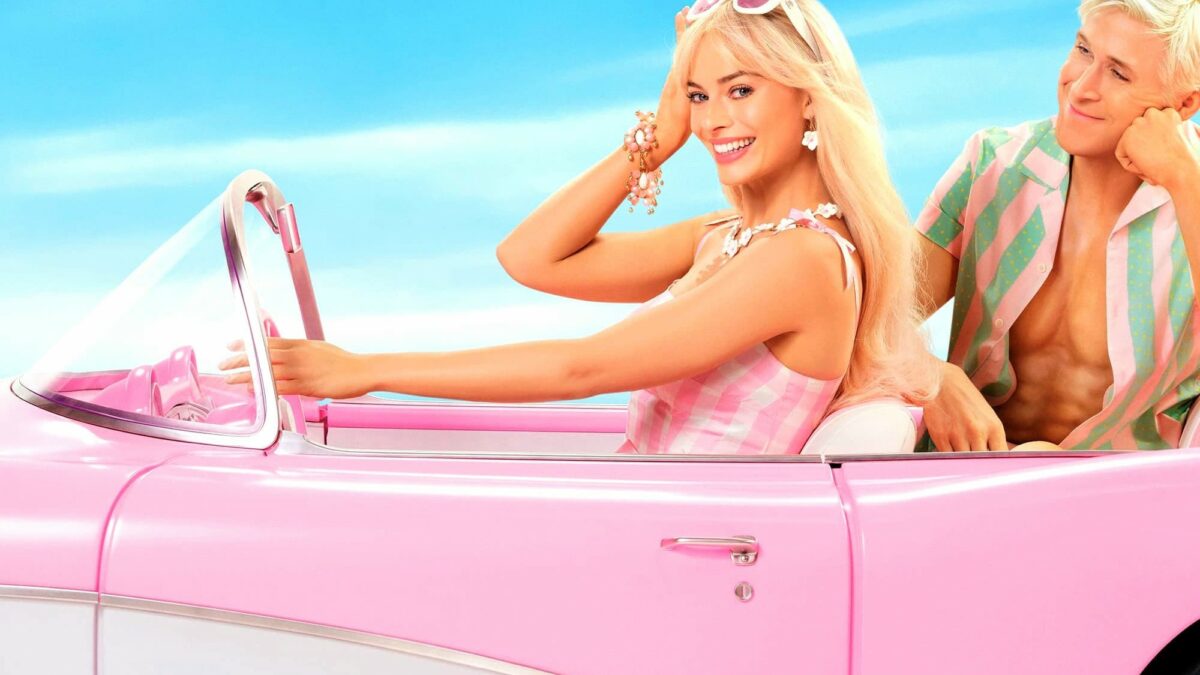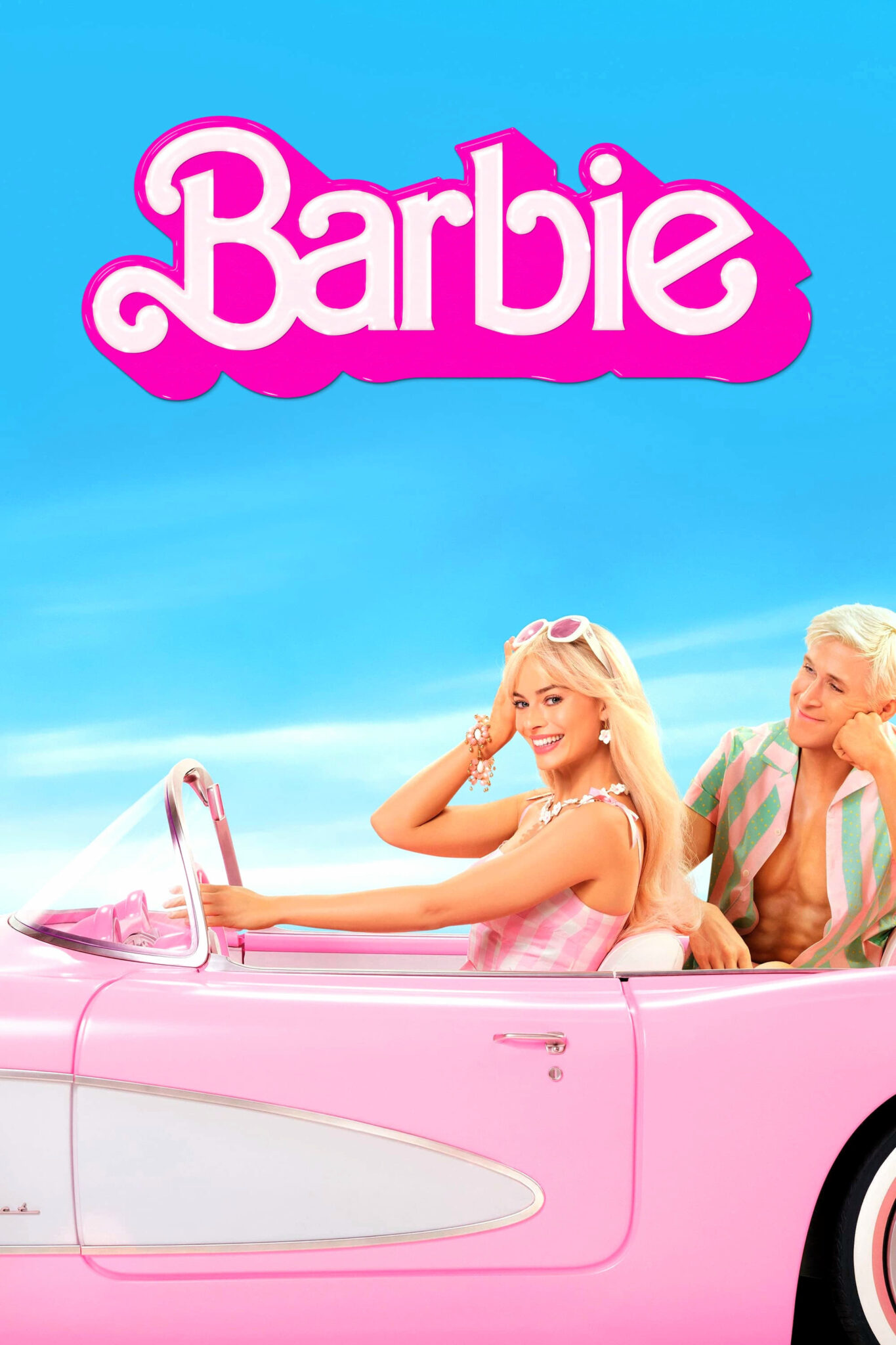
Writers: Greta Gerwig | Noah Baumbach
Director: Greta Gerwig
Genre: (Primary) Fool Triumphant / (Secondary) Rite of Passage
Consider the level of difficulty: create a story about a legendary piece of IP, a doll for girls that has become a cultural icon—the signature product for an entire toy company for a generation—and make it appealing to all audiences, but especially appealing to the girls who play with (or remember playing with) these dolls. And if you’re especially ambitious, aim to make it culturally relevant, psychologically astute, and convey a powerful message about humanity—all while making it entertaining, frothy, and fun.
Anyone interested in taking on that challenge?! Apparently, many tried (it had been in active development since 2009) but thank goodness Greta Gerwig and her partner Noah Baumbach were the ones to bring it to fruition in an A-List studio mega-production. They have succeeded spectacularly on the brightest stage possible and the film is earning every ounce of its record-shattering box office and prominence in the zeitgeist.
When someone says a story is smart, they’re usually referring to the details: the sharpness of the dialogue, the cleverness of the jokes, the dexterity of the argument, the aggregate of well-observed detail. And Barbie delivers admirably on all of these fronts. But there is an even more important way a story is smart: choosing the right premise! By premise I mean the biggest choices regarding a story’s beginning, middle, and end; what protagonist takes us from here to there; what opposition they encounter; and how the journey changes them… or doesn’t.
Premise structures and organizes all else under its conceptual umbrella, and if it’s even slightly misconceived, a story might never take flight, let alone soar. It will never feel fully realized. Barbie has an incredibly smart (and bold!) premise providing the supercharged thermal to elevate this glittering soapsud of a movie into the stratosphere.
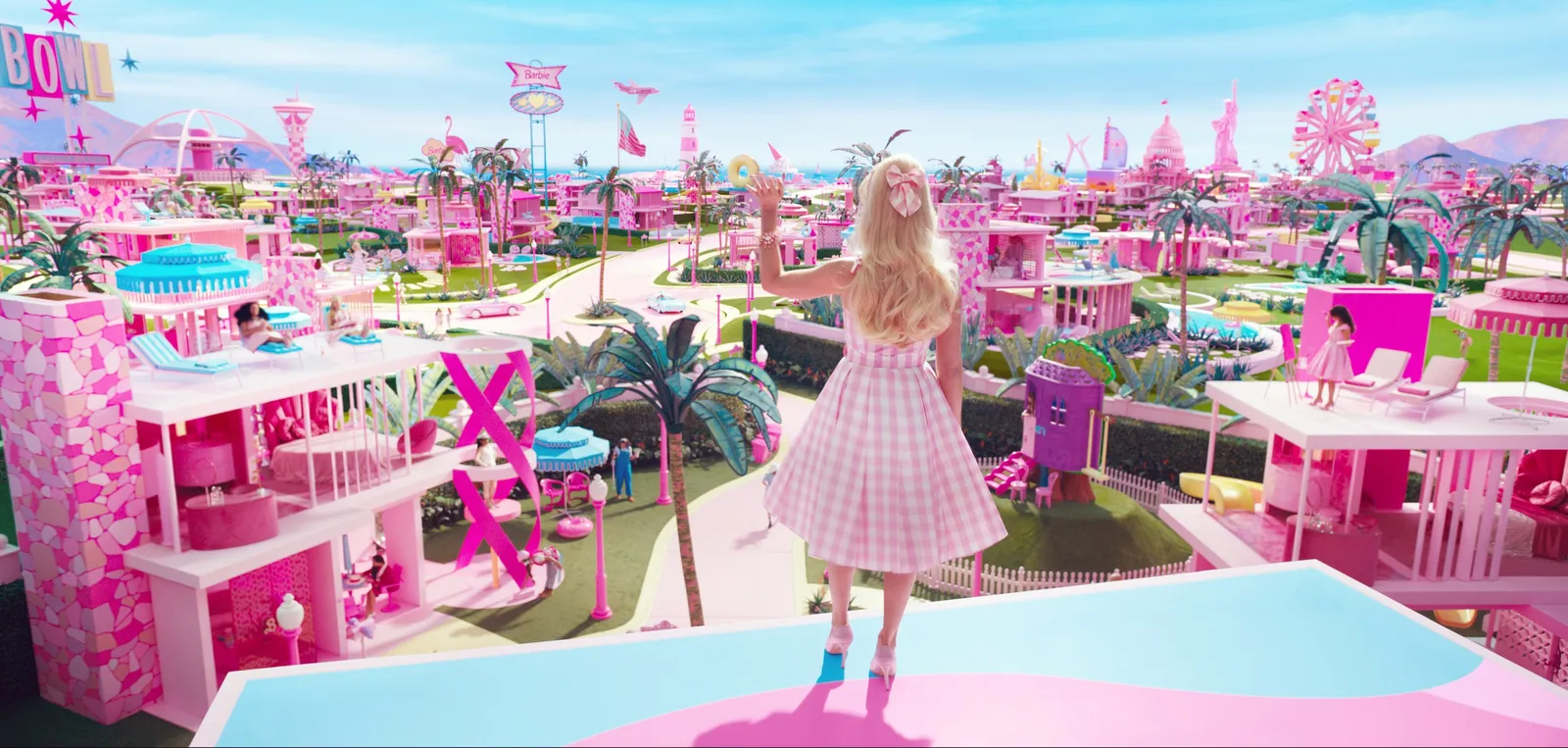
The premise of Barbie is that she lives in a perfect alternative universe called “Barbieland,” but must travel to the “Real World” to fix a disruption to Barbieland’s perfection, and in so doing inadvertently motivates her friend Ken to spearhead a takeover of Barbieland which must be put down by a Barbie counter-revolution.
Yes, I’m serious. That’s exactly what happens! And put in those terms, the premise sounds impossibly heavy, political, and adult to have mainstream appeal (let alone appeal to pre-adolescent girls), but the story’s executed with such insight and humor, buoyance and brilliance that it proves ideal.
Act I presents Barbie living in a fantastical doll land with all the other iterations of Barbie and ancillary characters (the Kens and Alan) and depicts this world as a celebration of female-centric cooperation and empowerment where there are no limits to female actualization—including the actualization of Stereotypical Barbie, the manifestation of Barbie that Margot Robbie plays to utter perfection.
This thesis world is meta in the best sense because it seamlessly presents a world that incorporates the history of Barbie as a brand (most every version of Barbie and Barbie accessory ever developed is exhibited, including Barbie’s voluminous wardrobe, dream house, and convertible roadster), representing all ethnicities and body types, and is such a powerful force of creation that it exists in a parallel world. This may seem an obvious choice for the initial setting, but it is not obvious or obligatory whatsoever. It is smart. In fact, it’s a stroke of genius.
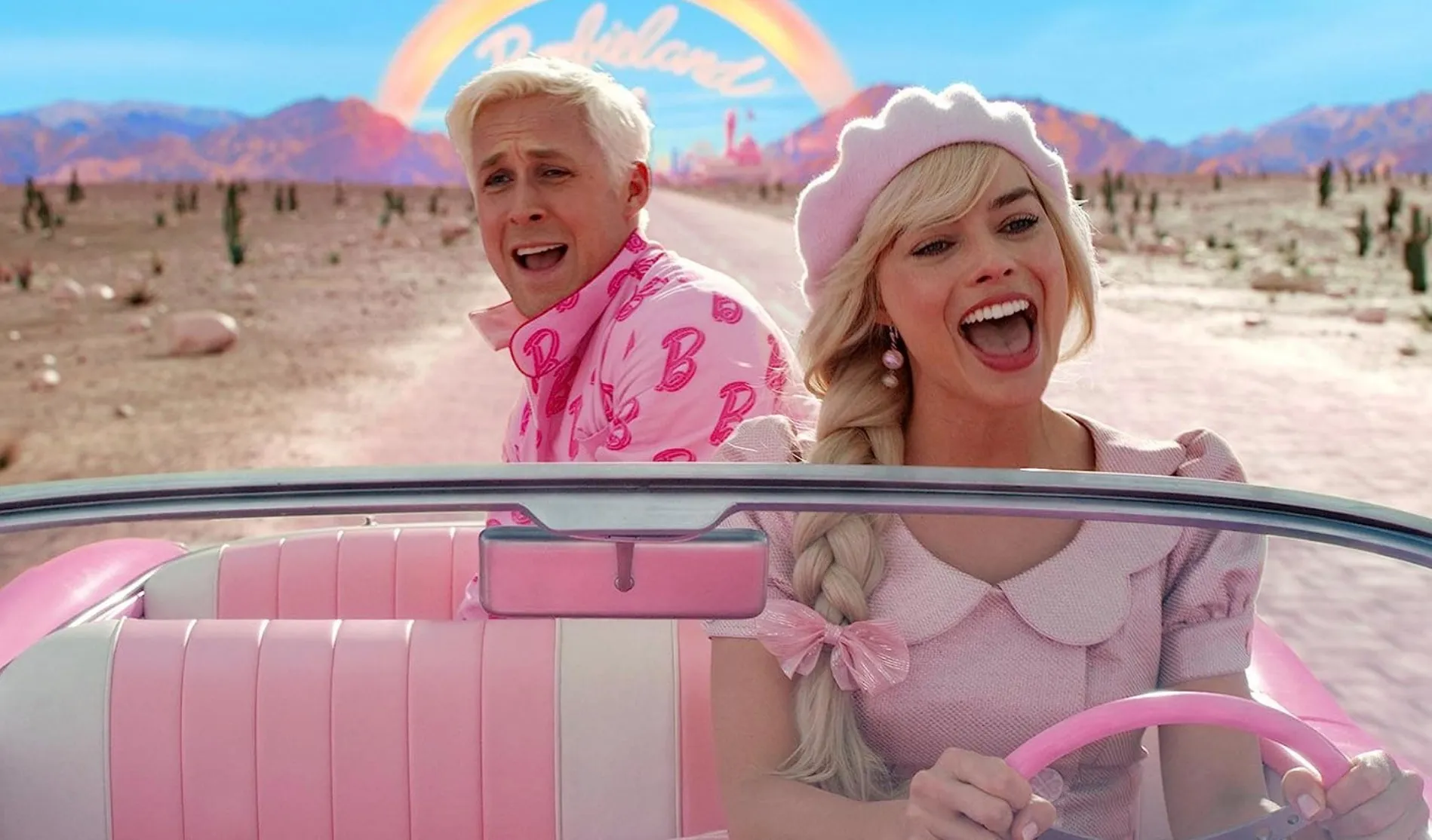
The next stroke of genius has to do with the “Real World,” which is presented as coexistent with Barbieland with borders porous enough for powerful thoughts and feelings to penetrate between them, and even for the two worlds to interact. This Dual Arena is a staple in fantasy and fairy tales; we see it in classics such as The Wizard of Oz, Alice in Wonderland, Peter Pan, Being John Malkovich and The Matrix (some of which are quietly referenced by the film in some way—more smart).
In Barbie, the complicated thoughts and feelings of Gloria, the human played by America Ferrara, is the catalyst for igniting “thoughts of death” in Stereotypical Barbie, which is the beginning of her transformation from Stereotypical Barbie to Existential Crisis Barbie (yes, Existential Crisis Barbie! And what could be more spiritually primal to present day audiences?), and this threatens to unravel the tightly knit perfection of Barbieland.
This threat motivates Barbie’s journey into the Real World to fix the problem, a passage that is not only depicted in a whimsically fabulous Barbie-esque style but is explained with hilarious mumbo jumbo from Weird Barbie, a movie character that finally uses Kate McKinnon’s comedic gifts to stellar effect (“Don’t overthink it.”).
When Barbie enters the Real World in Act II we discover the true brains behind the story premise: the collision of the contrasting world views at the heart of the Dual Arenas (a classic thesis vs. antithesis argument). Barbieland is an idealized Matriarchy run by Barbies. The Real World is the unvarnished Patriarchy run by men (and Mattel). And Stereotypical Barbie is the innocent confronting the often demeaning and disempowering aspects of the patriarchal establishment.
At its core, Barbie is a deft satirical examination of the Patriarchy from a deeply insightful and playful Matriarchal point of view, which gives the movie a powerful comedic and storytelling purpose, in addition to off-the-charts relatability. And since it leads to a transmutation at the end for Barbie, we know that the genre that we’re in, from a Blake Snyder perspective, is the Fool Triumphant. Barbie is a fantasy and a satire with a triumphant fool at its center—and “fool” is just a playful word to describe a character that is ignored, discounted, or minimized in any way as Barbie is in the Real World despite her Queen B status in Barbieland. Like all “foolish” protagonists, Barbie is a quintessential underdog.
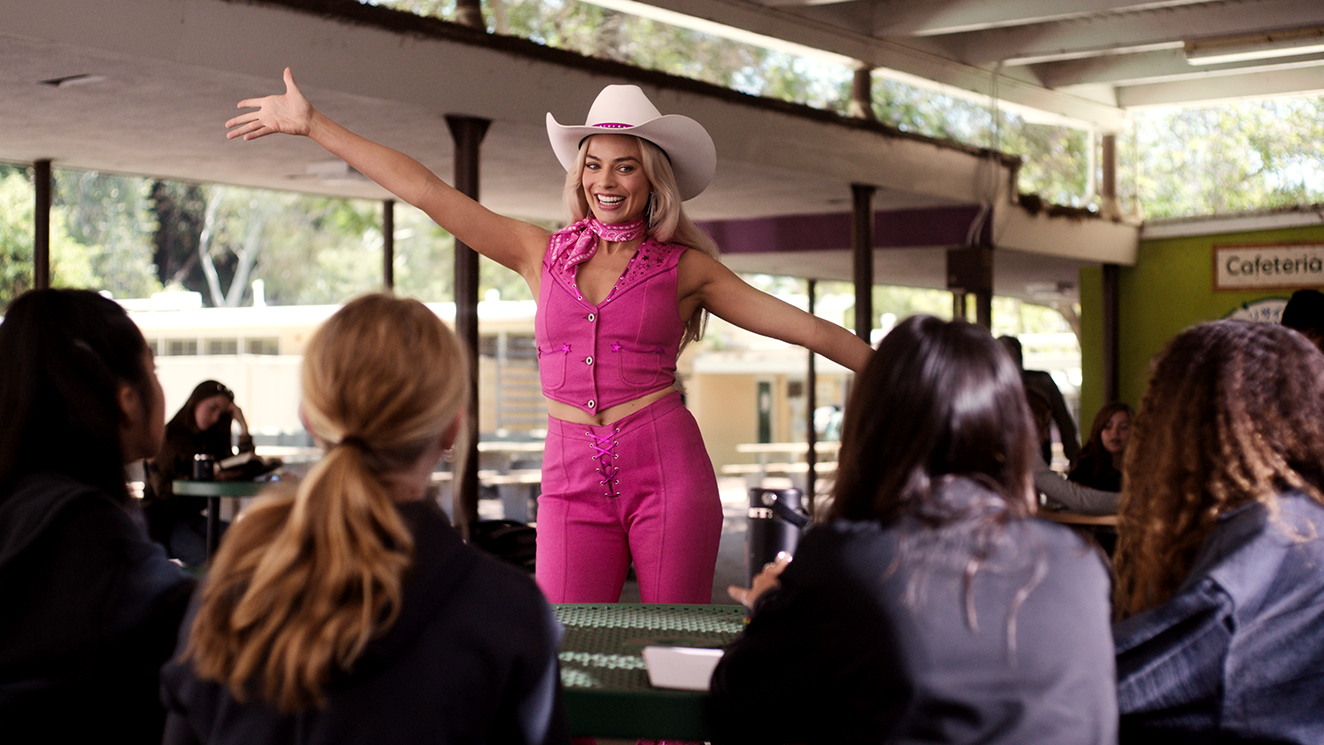
More genius can be found in how the film treats the relationship between Barbie and Ken. A conventional approach would be to make this a love story (Buddy Love as the STC! genre) between the iconic duo, but Barbie questions conventions. Instead of a romcom, it is closer to an “anti-romcom” where Ken’s role is not the counterpart that brings completion to Barbie but instead occupies the role of insider in a Fool Triumphant story, leading the opposition literally “on the inside” back in Barbieland. This happens because Ken, to Barbie’s initial dismay, stows away on Barbie’s trip to the Real World and is introduced to the intoxicating temptations of the Patriarchy that affords him a deference and respect (a “privilege”) that he has never experienced in Barbieland.
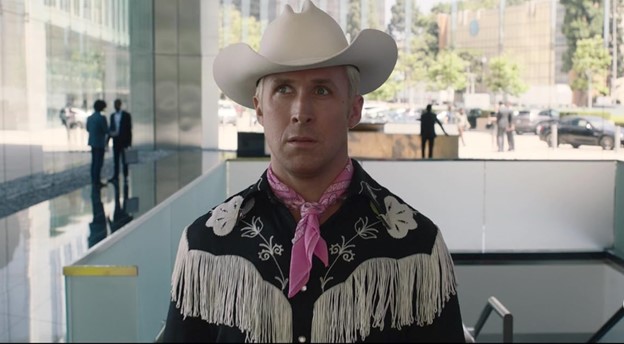
This taste of Patriarchy is too intoxicating not to share with his fellow Kens back in Barbieland, which he does with gusto. The movie also shows how Ken’s need for Barbie’s approval is a misguided dependence, and this is a powerful insight into how masculine urges can all too easily turn toxic. If Ken can’t earn Barbie’s affection then he will fundamentally change her world so that he has primacy; motivated by insecurity and spite, Ken renames Barbieland “Kenland.”
Ken’s story resolves with a transformational self-revelation that Barbie helps him perceive: he doesn’t need Barbie to feel whole—that must come from within himself. This profound truth, which is both monumental but also a simple shift in attitude, helps set things right in Barbieland. It is also a subversion of gender conventions since mainstream relationship stories usually depict the “psychologically whole” male helping the “evolving” female understand her worth (um, Titanic, for instance?). In this case, it is Ken who is plagued by disempowering relationship insecurities, his plight of “blonde fragility” that he sings aloud in the hilarious “I’m Just Ken” song.
This story/character choice also subtly communicates the idea that the norms of the romcom—where male/female counterparts can complete each other in a perfect pairing—may very well be just another oppressive construct of the Patriarchy(!). This thematic point is worth considering with great care between belly laughs. Could anyone have predicted that any Barbie movie could convey such sophisticated themes without compromising its essential joie de vivre? The filmmaking collaborators set themselves an incredibly high bar.
But the story has more on its mind than lampooning men. It also examines mother/daughter dynamics through the subplot of Gloria and Sasha, their fraught relationship with each other and their individual relationships with the various icons of Barbieland. This is more complex territory that makes the film resonant for girls and teens today, and not just their moms.
In addition, the story’s internal logic is so strong that the flight back to Barbieland and the eventual counter-revolution against the Kens and Kendom (as preposterous as this plot development sounds) feels totally organic and inevitable, in addition to being a hysterical Broadway musical/music video send-up of testosterone-heavy action movies (the Zach Snyder oeuvre, anyone?). Kudos to Ryan Gosling and the entire tribe of Kens for embracing self-mockery with precision and abandon!
Like all great musicals, the movie brilliantly employs music and song as an additional layer of communicating its ideas and themes, and I predict a Broadway musical of Barbie will have a long life on stages across the world. Barbie punches above its weight, swings for the fences, and hits it out of the park with every choice, and I say this knowing full well that the film specifically satirizes sports cliches! I happily join the male self-mockery.
Perhaps the smartest choice of all, and the one that gives the movie startling gravitas, is Barbie’s ultimate transmutation. Restoring the perfection of Barbieland satisfies all but Stereotypical Barbie, who has experienced the Real World, the world of humanness, and knows now that Barbieland may be perfect but is also limiting. The Real World has given her a taste of more… more complication, challenge, nuance, and disappointment, but also the potential for more rewards.
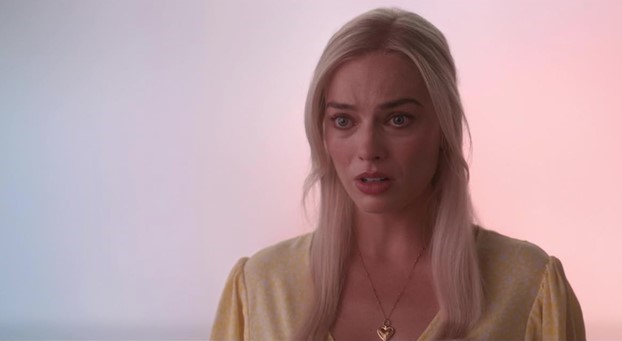
Like another doll named Pinocchio, Barbie longs to be real. But there’s more to it. In a nod to the meta nature of this extremely self-aware work, Barbie meets with her Fairy Godmother/Creator Ruth and confesses she wants to be “part of the people who make the meaning, not the thing made.” I sense deep, personal autobiography in this line from Greta Gerwig, the actress turned writer who longed to direct, and has now conquered the world as co-writer/director of this deeply meaningful work with her brain and her bounce.
It is the longing felt by every artist. Like Dorothy wishing herself home from Oz, the final scene shows Barbie taking a permanent place in the Real World, excited to explore a fully adult life and all of its complexities, starting with her first trip to the gynecologist! This final moment is a sublime grace note, both funny (because it is a misdirect) and profoundly moving, a perfect metaphor for the rite of passage from doll to woman, from ideal to human, from perfect to perfectly imperfect—and created thing to potential creator.
Speaking of Rite of Passage, the secondary Blake Snyder genre operating here is clearly ROP because that concerns the character transformation, which is profound. As happens in the very best stories, the final image/moment is a deeply emotional synthesis emerging out of the thesis/antithesis argument and presents the new promise of Barbie’s fundamental change: a life with sex (just not with Ken!) and procreation with all its messy pleasures and complexities.
This is the completion that Barbie needs. Not to be paired with Ken or even reign in Barbieland, but to embrace her humanity and inevitable death with courage and joy. This is universally applicable and relatable to all audiences across the age and gender spectrum because this is the heroic journey that we all face as humans from cradle to grave.
I can’t think of a more primal and empowering message, or a message better served by buoyance and braininess to a worldwide audience. And I think that audience largely agrees.
Brava to all the Barbies who brought us this amazing work!
